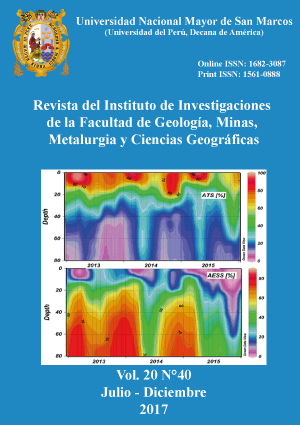Using the queuing theory in mine haulage. Case of Magistral mining operation
DOI:
https://doi.org/10.15381/iigeo.v20i40.14387Keywords:
Model, queueing, mine interior, surface, loading, unloading, haulingAbstract
The study minimizes the cycle waiting time of loading and hauling equipment between loading points of the underground mining operation and unloading points on surface. For this purpose the existing loading and hauling system is first analyzed. Present system consists of four underground loading points and 4 unloading spots on surface. The waiting cost is estimated and then the increment in loading points underground is proved for reducing haulage cost which is a bearing component of the mining cost. By applying queuing techniques the possible reduction in waiting cost is obtained by increasing the number of loading points. The information gathered comes from loading and hauling times measured at site. Evaluated variables were number of loading points vs. waiting time cost of haulers and unit cost of underground ore and waste bins.Downloads
Published
Issue
Section
License
Copyright (c) 2017 Oswaldo Ortiz Sánchez, Godelia Canchari Silverio

This work is licensed under a Creative Commons Attribution-NonCommercial-ShareAlike 4.0 International License.
AUTHORS RETAIN THEIR RIGHTS:
a. Authors retain their trade mark rights and patent, and also on any process or procedure described in the article.
b. Authors retain their right to share, copy, distribute, perform and publicly communicate their article (eg, to place their article in an institutional repository or publish it in a book), with an acknowledgment of its initial publication in the Rev. Inst. investig. Fac. minas metal cienc. geogr.
c. Authors retain theirs right to make a subsequent publication of their work, to use the article or any part thereof (eg a compilation of his papers, lecture notes, thesis, or a book), always indicating the source of publication (the originator of the work, journal, volume, number and date).























